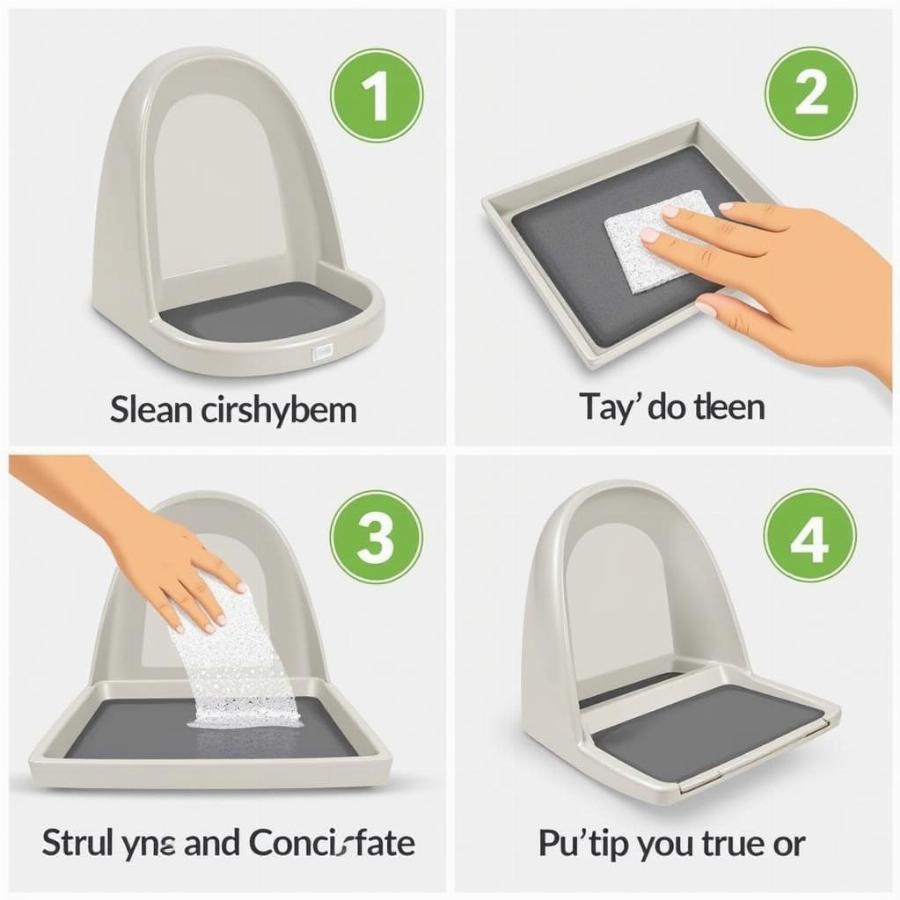Dog pee pad trays are a popular choice for pet owners looking for a convenient and hygienic indoor potty solution for their furry friends. They offer a designated space for dogs to relieve themselves, especially beneficial for apartment dwellers, puppies in training, or dogs with mobility issues. Understanding the various types, benefits, and best practices for using dog pee pad trays can make a significant difference in maintaining a clean and comfortable home environment for both you and your pet.
Choosing the Right Dog Pee Pad Tray
Selecting the appropriate dog pee pad tray depends on several factors, including your dog’s size, breed, and personal habits. There are various types of trays available, each designed with specific features to cater to different needs. For smaller breeds, a standard-sized tray will likely suffice. However, for larger dogs, consider opting for a larger tray or one with a raised grate to prevent splashing and keep paws dry. Some trays even come with features like antimicrobial protection or built-in attractants. What works best for one dog might not be ideal for another, so consider your dog’s individual needs.
Benefits of Using a Dog Pee Pad Tray
Using a dog pee pad tray offers a multitude of benefits for both dog owners and their canine companions. Firstly, it provides a designated area for dogs to eliminate, reducing the likelihood of accidents on carpets or furniture. This is particularly useful for housebreaking puppies or for dogs who are unable to go outside regularly. Secondly, pee pad trays help maintain a cleaner and more hygienic home environment. The pads absorb urine and odors, preventing unpleasant smells from permeating the house. This contributes to a healthier and more comfortable living space. Finally, they offer convenience, especially for people with busy schedules or those living in apartments.
How to Train Your Dog to Use a Pee Pad Tray
Training your dog to use a pee pad tray requires patience, consistency, and positive reinforcement. Begin by placing the tray in a quiet and easily accessible location. Introduce your dog to the tray and allow them to sniff and explore it. When you notice signs that your dog needs to relieve themselves, such as circling, sniffing, or squatting, gently guide them to the tray. Once they eliminate on the pad, praise them enthusiastically and offer a small treat. Consistency is key, so be sure to take your dog to the tray regularly, especially after waking up, after meals, and before bedtime.
Maintaining Your Dog Pee Pad Tray
Proper maintenance of the dog pee pad tray is essential to ensure hygiene and prevent odors. Replace the pee pads regularly, ideally once or twice a day, depending on your dog’s size and frequency of use. Clean the tray thoroughly with a pet-safe disinfectant at least once a week to eliminate bacteria and prevent the buildup of unpleasant smells. For trays with removable grates, make sure to clean both the grate and the base of the tray. A clean tray is more inviting for your dog and helps maintain a fresh-smelling home. Similar to dog tag machine, regular maintenance is crucial for optimal performance.
What if My Dog Still Has Accidents?
Accidents can happen even with the most diligent training. If your dog continues to have accidents outside the tray, don’t get discouraged. Re-evaluate your training approach and ensure that the tray is accessible and clean. Consider using an enzymatic cleaner to thoroughly remove any lingering urine scent from previous accidents, as this can attract your dog back to the same spot. Sometimes, the location of the tray might not be ideal for your dog, so try moving it to a different area. If the problem persists, consult with a veterinarian or a professional dog trainer for personalized guidance.
 Cleaning a Dog Pee Pad Tray for Optimal Hygiene
Cleaning a Dog Pee Pad Tray for Optimal Hygiene
Conclusion
Dog pee pad trays are a valuable tool for pet owners seeking a practical and hygienic indoor potty solution. Choosing the right tray, understanding the benefits, and implementing proper training and maintenance practices can greatly enhance the effectiveness of using pee pads and contribute to a clean and comfortable home environment for both you and your beloved companion. Remember, consistency and patience are key to successful pee pad training. Finding the perfect setup might take time, but the rewards of a clean and happy home are well worth the effort. Consider checking out resources on indoor bathroom for dogs for additional insights.
FAQ
Q: How often should I change the pee pads?
A: Ideally, once or twice a day, or as soon as they are soiled.
Q: What type of cleaner should I use for the tray?
A: A pet-safe disinfectant is recommended.
Q: What size tray is best for my dog?
A: The size of the tray should correspond to your dog’s size. Larger dogs require larger trays.
Q: Can I use pee pad trays for cats?
A: While designed for dogs, some cats may also use them. However, a litter box is typically preferred for cats. You might find useful information on dog bathroom decor for creating a comfortable space for your pet.
Q: My dog keeps chewing on the pee pads, what should I do?
A: Try a tray with a grate that covers the pad. Alternatively, bitter apple spray can deter chewing.
Related Questions You Might Ask
- What are the best pee pads for odor control?
- Are there eco-friendly pee pad options?
- How can I prevent my dog from tracking urine from the tray? For those interested in alternative potty solutions, check out dog grass pee pads or real grass pad for dogs.
Beaut Dogs is your trusted source for all things related to dog care, offering expert advice and valuable resources. For personalized assistance and further information, please contact us at [email protected] (Email address). We’re here to support you and your furry friend every step of the way. Visit Beaut Dogs today!